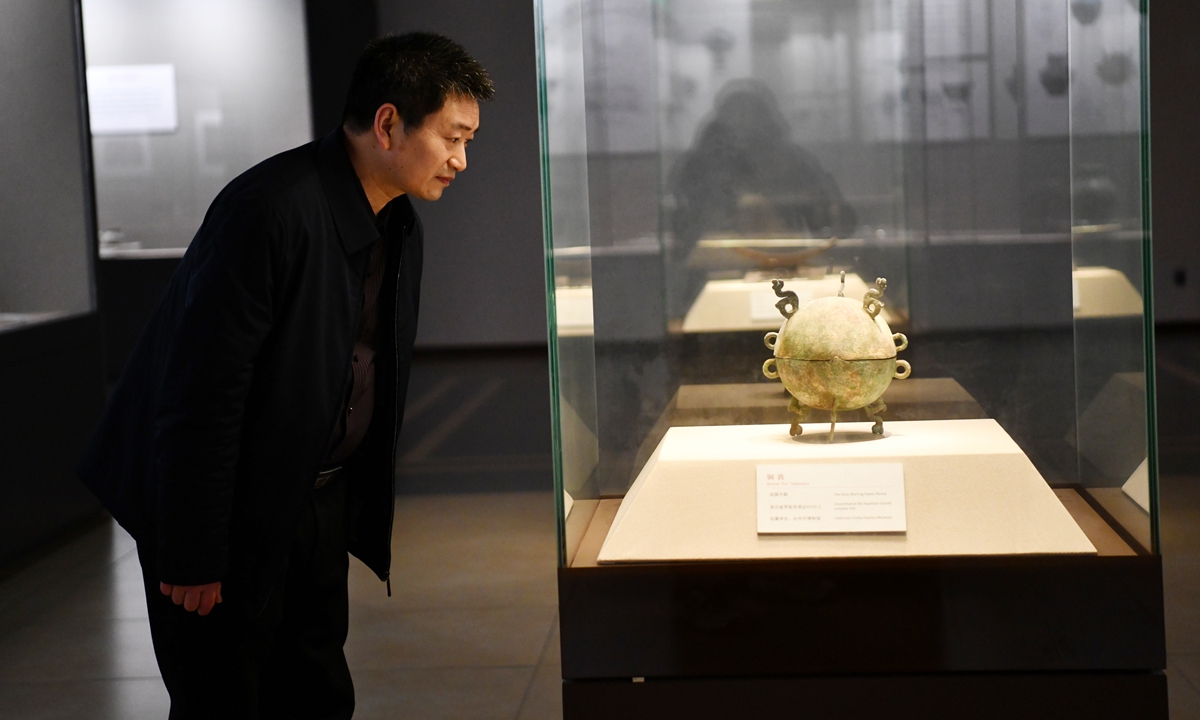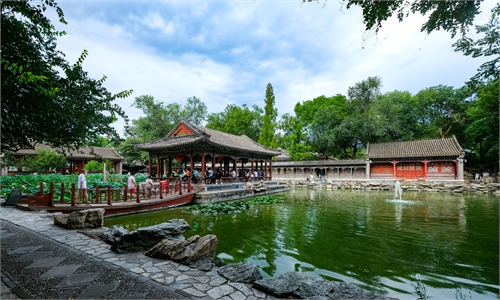ARTS / CULTURE & LEISURE
Ba culture museum to open
5,300-year-old site unveils 'totality of cultural legacies'

A cultural relic unearthed in the Luojiaba Site Photo: VCG
Construction has finished on the Luojiaba Site Museum, a cultural space covering nearly 12,000 square meters. Set to open in April, it will be the first museum in China dedicated solely to the Ba culture, a Neolithic Chinese civilization that once existed in what is today Southwest China.
The museum is located in Xuanhan county, Dazhou city, Sichuan Province.
Director of the Xuanhan County Culture Sports Tourism Bureau Wu Yi said that the museum is making final "internal arrangements" such as curating exhibitions. Hundreds of Ba cultural relics, especially bronze wares such as swords and zun, wine vessels popular in the Shang Dynasty (c.1600BC-1046BC), will be on display for visitors.
Zhu Xinmin, a historian told the Global Times that the Ba culture refers to a "totality of cultural legacies" that include language, art, social and ritual systems that were invented by the ancient people who lived in the regions that are now Chongqing Municipality, and the provinces of Sichuan and Hubei.
"Ba culture is known for its bronze relics and is as mysterious as the Sanxingdui Ruins, which is also discovered in Sichuan, as it has a lot of secret totems and symbols," Zhu noted.
Besides galleries and exhibition halls, the museum will also have a relic conservation center and a center for social programs.
Chu Xin, a cultural sociologist, told the Global Times that the museum is another example of how China's "wise implementation" of village museums can revive the country's "local cultural assets."
"China's cultural resources are diverse and dotted across various places. Establishing a modern museum close these cultures' ancient roots is the best way to preserve the culture's authenticity," Chu said, adding that such cultural institutions act as a "glue" binding the local community together and strengthening their identity.
"The Luojiaba Site museum can remind local residences about their ancestry. It can promote their cultural confidence as well," Chu noted.
The Luojiaba Site dates back to 5,300 years ago. Several archaeological investigations have been carried out at the site since 1999, revealing a total of 3,000 Ba relics such as jades, bronze wares and pottery wares so far.
Remarkable discoveries include Ba symbols such as tiger and sun patterns on objects such as ancient weapons, seals and musical instruments.
"Such symbols were commonly believed to be a type of hieroglyph that showed ancient Chinese people's ingenuity documenting their culture," Zhu noted.
"In today's fast-developing China, small museums are filled with the heritage of thousands of years of history and culture. They reflect the soul of a country and a nation, and strengthen cultural self-confidence," Wu said.



